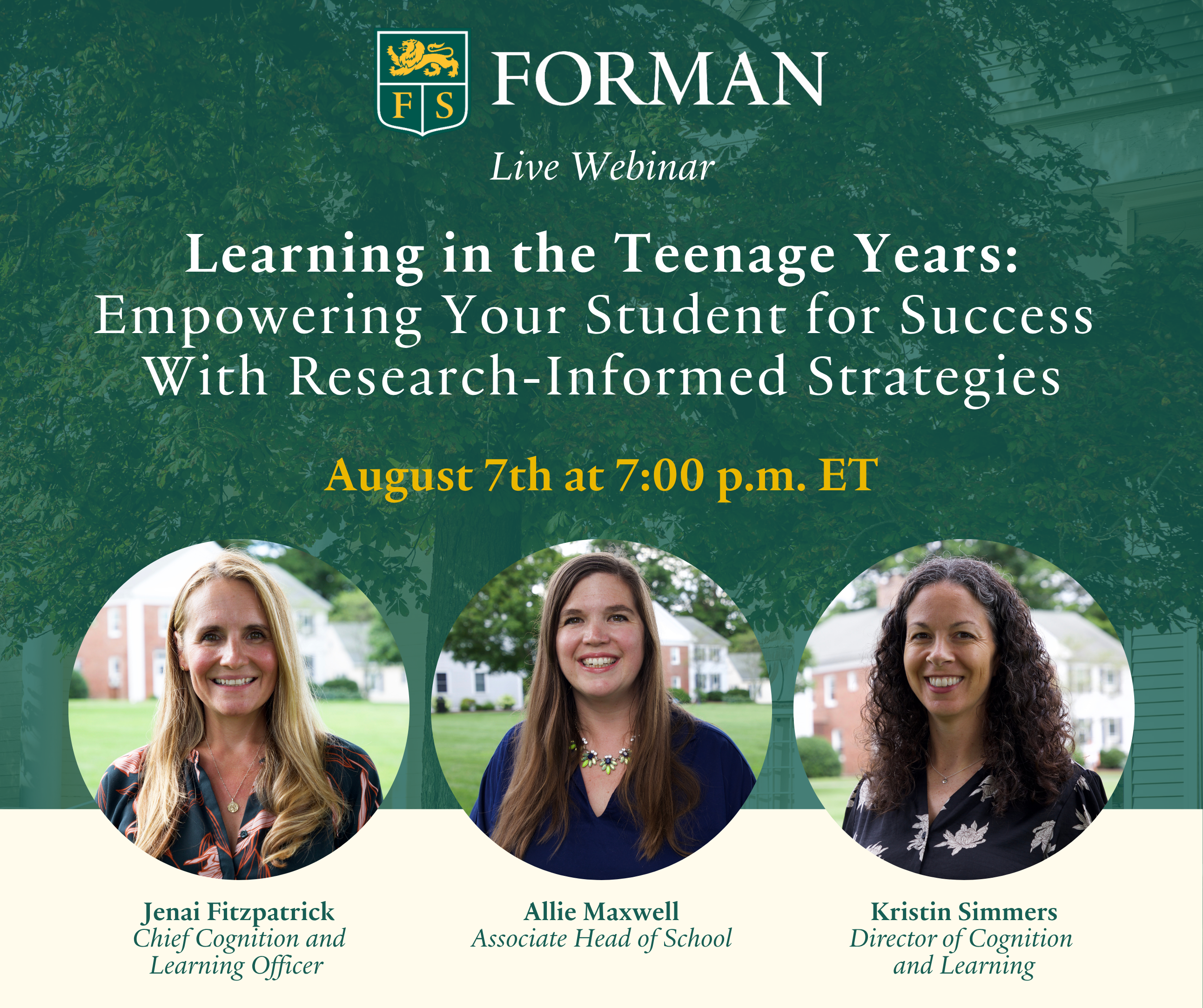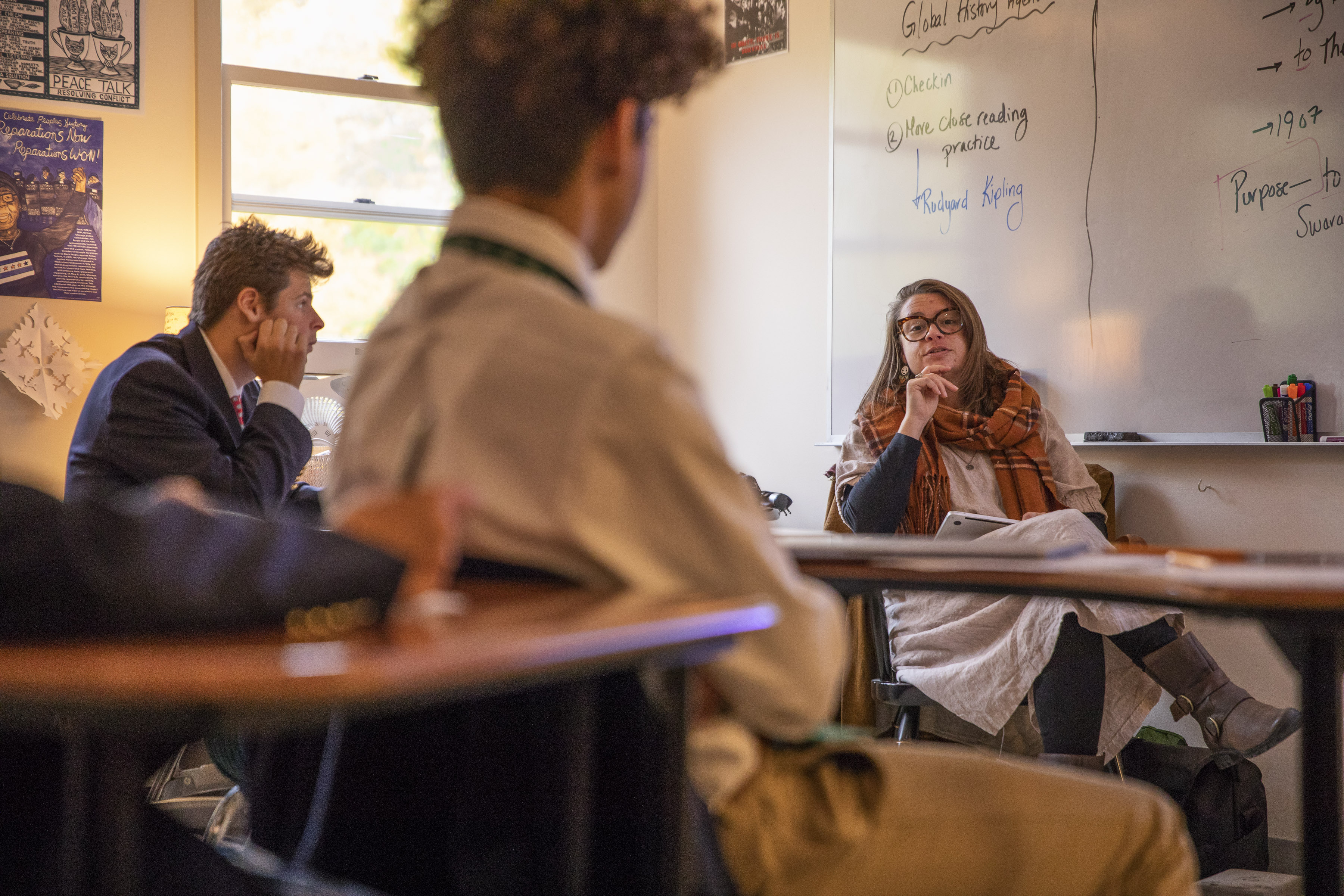Assistive technology is any device or software that helps to compensate for a student’s specific learning challenges. Assistive technology tools can immensely help students with ADHD and dyslexia, whether the student struggles with focus, time management, or content retention.
Over the last decade, the growth in assistive technology options available for students with learning differences has been exponential. There are a variety of assistive technology options that exist today that are designed to help students make the most of their abilities. It’s important to note that assistive technology does not replace accommodations or interventions implemented to support students with ADHD or dyslexia; rather, it complements them.
Ultimately, I think it’s vital to view assistive technology as a tool that can provide alternative strategies for students to compensate for areas of challenge and capitalize on their most notable areas of strength.
At Forman, we use an individualized approach when considering what assistive technology best suits the student. Our perspective and methodology are modeled after the SETT framework that Joy Zabala, a leading expert on the use of assistive technology, developed. This is a four-part model intended to promote collaborative decision-making in all phases of assistive technology, service design, and delivery from consideration through implementation and evaluation of effectiveness.
Student: What are the student’s skills and areas of challenge?
Environment: What environments would be conducive to allowing the technology to be effective? What are the specifics of the environment where the students will be when using the tools?
Task: What are the elements of the tasks that the student needs help to perform?
Tools: After considering the first three elements, we look at the individual tools that will aid the student in completing the tasks within the particular examined environment.
Different learning challenges have different solutions, and there is no one-size fits all approach or model for assistive technology at Forman. It is not feasible to think that assistive technology is a solution that can address all learning challenges at once. What works for one student in one setting may not work for that same student in a different setting. We stress the importance of getting the student interested and internally motivated to experiment with and try assistive technology options that may benefit them.
We view students' use of assistive technology as a gradual approach. We emphasize that students must be taught how to use the technology, be intentionally supported and guided as they use it, be reflective regarding its benefit, and ultimately be reminded to keep using it.
Most of the assistive technology we use are computer software and applications or extensions that assist students in accessing or producing the written word. The most common assistive technology tools that students use are text-to-speech, which reads printed text aloud, and speech-to-text, where spoken words appear as printed text.
Here are some examples of assistive technology apps and extensions for students with learning differences:
Reading/Writing Tools
Bookshare: This tool utilizes text-to-speech technology, which helps students with learning differences interact with the text in a meaningful way. It highlights words, enabling students to follow the text with their eyes as they listen. This can help them focus on their reading for longer periods of time.
Read & Write for Google: This Chrome extension makes documents, web pages, and common file types more accessible for students with learning differences. There is a built-in word-prediction tool that suggests phrases as a student types. Students can also type directly on PDFs.
Dyscalculia/Math Tools:
EquatIO: This Chrome extension helps students more easily write math expressions in that it has built-in dictation features that allow students to transfer their work to a Google Document. The software understands what is being typed and turns those expressions into accurate on-screen formulas.
ModMath: This app provides students with the ability to simplify math problems and detailed equations through the use of a touchscreen and keypad. The app’s virtual graph paper creates a pencil-free format in which to complete arithmetic.
Notetaking and Executive Function Tools:
Notability: This is commonly referred to as the “whiteboard app” because it acts similarly to a whiteboard in which teachers and students can draw or write. This app incorporates multimedia, text, and screen recording into an integrated approach for the student.
Evernote: This app makes notes more useful by taking a multisensory approach to note-taking. Students can add text, images, audio, scans, PDFs, and documents into a single portal.
When a student with learning differences is first exposed to assistive technology, we are intentional in our conversations about the efficacy of what they are using and its intended goal. We want students to collaborate with us in its use and provide feedback on how things are developing. Diverse learners feel empowered when using assistive technology as they can more effectively engage in the material being presented. With these tools, students can access content that is challenging to them due to their learning difference, serving as a catalyst for greater independence in the learning process.
Written by: Devin Burkhart, Director of Cognition & Learning Department
To learn more about Forman’s Cognition and Learning Department, click here.





